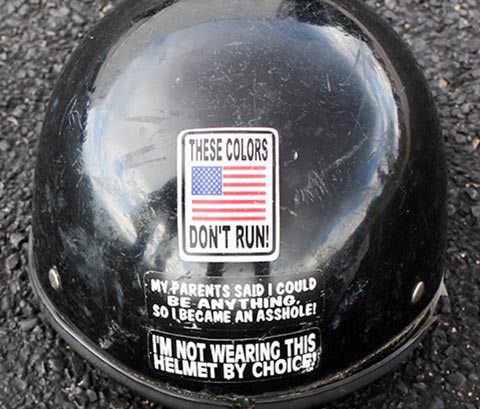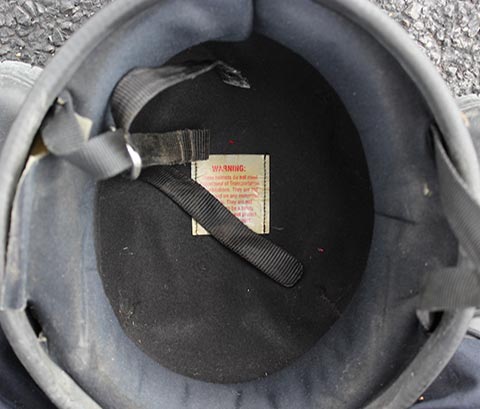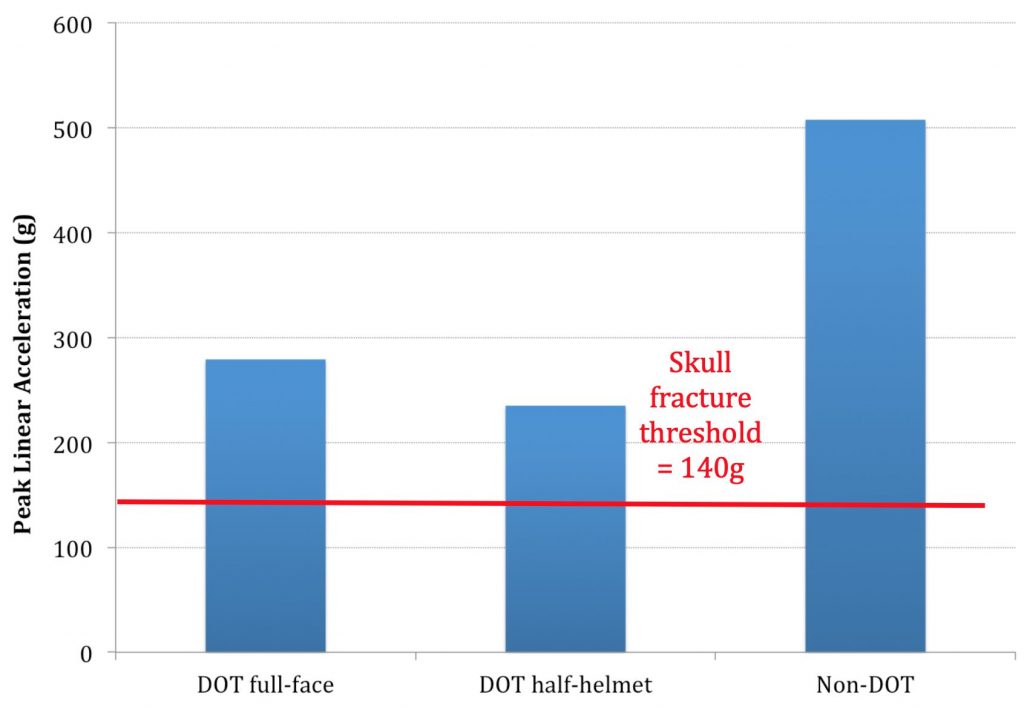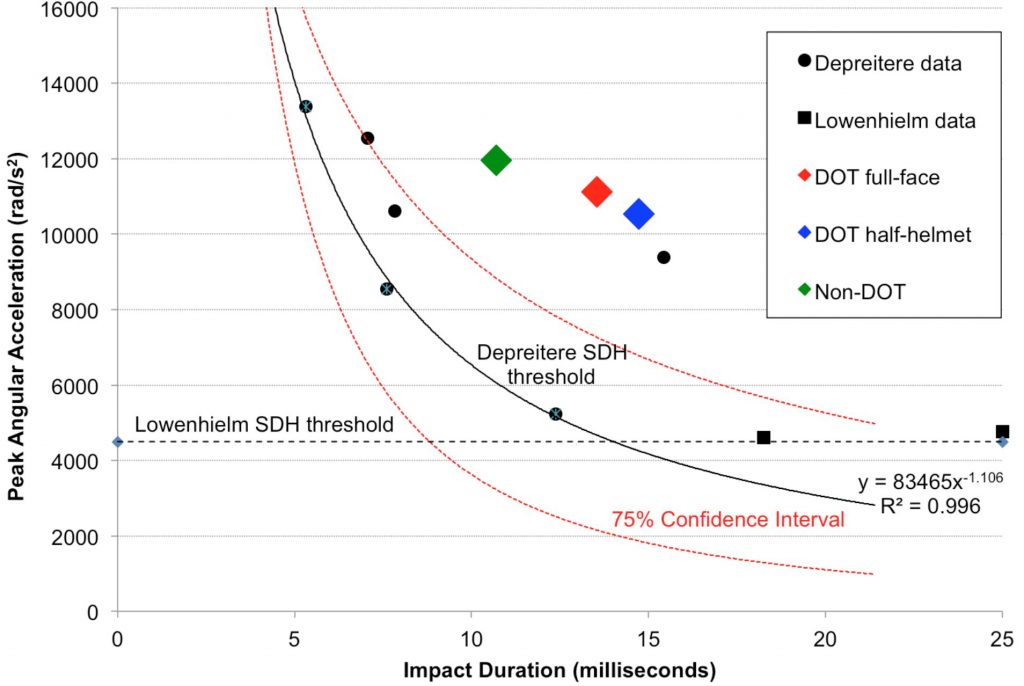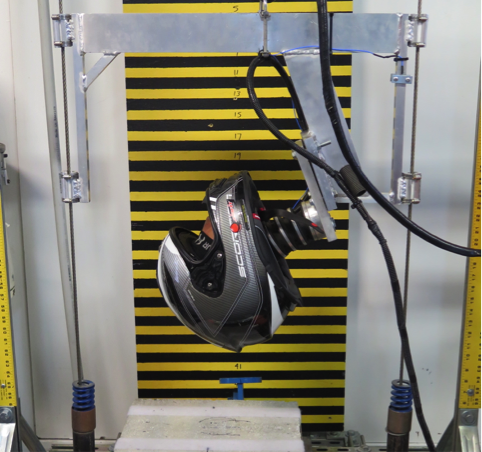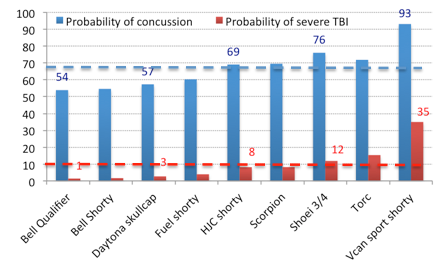I am a motorcycle enthusiast with 40+ years of experience in the saddle and a biomechanics researcher focusing on head and brain injury. Over the years I performed more than 2600 helmet impact tests, including 328 motorcycle helmets. The following are my take-away points for motorcyclists:
- Helmets are the best protection we have against head and brain injuries. That said, standard certified motorcycle helmets are only 37-42% effective in preventing fatal head injuries.
- Helmets are designed after ancient military helmets to serve as a second skull and thereby protect the head against penetrating injury.
- Helmets, in general, are not intended to protect against brain injury.
- There are two types of head and brain injuries, which are caused differently:
- Translational (linear) forces cause focal injuries including cuts, bruises, and skull fractures.
- Tangential forces cause rotational injuries including concussion, brain nerve damage, and brain bleeding.
- Translational and tangential forces are generated in every impact
- Certified motorcycle helmets do a great job of protecting against focal head injuries.
- My research shows that DOT-certified motorcycle helmets reduce the risk and severity of focal injuries by 93 percent.
- Novelty (non-certified) helmets do not offer any protection against focal injuries.
- It is therefore highly recommended that riders wear a certified motorcycle helmet at all times.
- Helmets that offer greater coverage, i.e. open-face (3/4) and full-face helmets, provide the best protection against focal injuries. However, the US DOT standard (FMVSS 218) [i] does not require impact testing of the chin bar, therefore there is no certified protection against facial injuries for full-face helmets that are only certified to the DOT standard.
- Generally, certified motorcycle helmets do not protect against rotational brain injuries. In fact, on average, a standard certified motorcycle helmet will actually increase the rider’s risk of concussion, nerve damage (axonal injury), and brain bleeding (subdural hemorrhage) by 19 percent, compared to an unhelmeted head impact.
- Rotational brain injuries are the cause of fatalities in two-thirds of all helmeted motorcycle deaths.
- It has been shown that, in general, larger and heavier helmets increase the risk of rotational brain injuries, including concussion, axonal injury, and brain bleeding because they generate greater impact-related rotational forces on the brain.
- So, what can a safety-minded rider do to minimize their risk?
- Revised motorcycle helmet standards are starting to look at brain injury risk. The new ECE 22.06 [ii] and Snell M2025 [iii] standards now measure the risk of rotational brain injury, though the passing threshold is 23% risk of neurologically devastating or potentially fatal rotation brain injury, at a moderate impact speed of 17.5 mph.
- My recommendation is to choose a helmet that meets either the ECE 22.06 or Snell M2025 standard, in addition to whatever standard is mandated in your country.
- Choose a lighter, smaller helmet with the desired coverage over a larger, heavier helmet. Not only will this likely provide better protection against rotational brain injuries, but will also generate less wind resistance and be more comfortable on those longer rides.
- Consider helmets that incorporate new technologies that are intended to reduce the risk of rotational brain injuries. Such technologies include the omni-directional protection system and the multi-directional protection system (MiPS).
- Don’t buy a helmet just based on looks, make an informed purchase based on fit and protective performance.
- What can motorcycle helmet manufacturer’s do to improve helmet performance?
- Current motorcycle helmet designs may be over-engineered to reduce translational forces that cause focal head injuries, resulting in helmets that are larger and heavier, thereby increasing the risk of rotational brain injuries, which are the primary cause of fatality in two-thirds of helmeted motorcycle crashes. Protection against focal injuries is important, but needs to be balanced against increased risk of rotational brain injuries. Manufacturers should evaluate materials that allow the development of smaller and lighter helmets.
- A meta-analysis is underway, comparing helmets intended for a variety of activities including motorcycling, skiing, bicycle, off-road, American football, ice hockey and military. Preliminary results suggest that helmets intended for other sports activities may outperform motorcycle helmets at similar impact speeds in terms of protection against both focal head injuries and rotational brain injuries
[i] U.S. Department of Transportation (2013) Federal Motor Carrier Safety Administration Standard No. 218, Motorcycle helmets. Washington, DC.
[ii] United Nations (2021). Uniform Provisions Concerning the Approval of: Protective Helmets, of their Visors and of their Accessories for Drivers and Passengers of Motorcycles and Mopeds. Regulation No. 22-06
[iii] Snell Memorial Foundation. (2024). Standard for Protective Headgear for use with Motorcycles and Other Motorized Vehicles. M2025


 Current motorcycle helmet testing standards do not incorporate measures of angular acceleration and therefore fail to assess whether helmets offer protection against catastrophic brain injuries. The omission of this critical measure is reflected epidemiologically in the disproportion of closed head injuries in fatal motorcycle accidents.
Current motorcycle helmet testing standards do not incorporate measures of angular acceleration and therefore fail to assess whether helmets offer protection against catastrophic brain injuries. The omission of this critical measure is reflected epidemiologically in the disproportion of closed head injuries in fatal motorcycle accidents.
